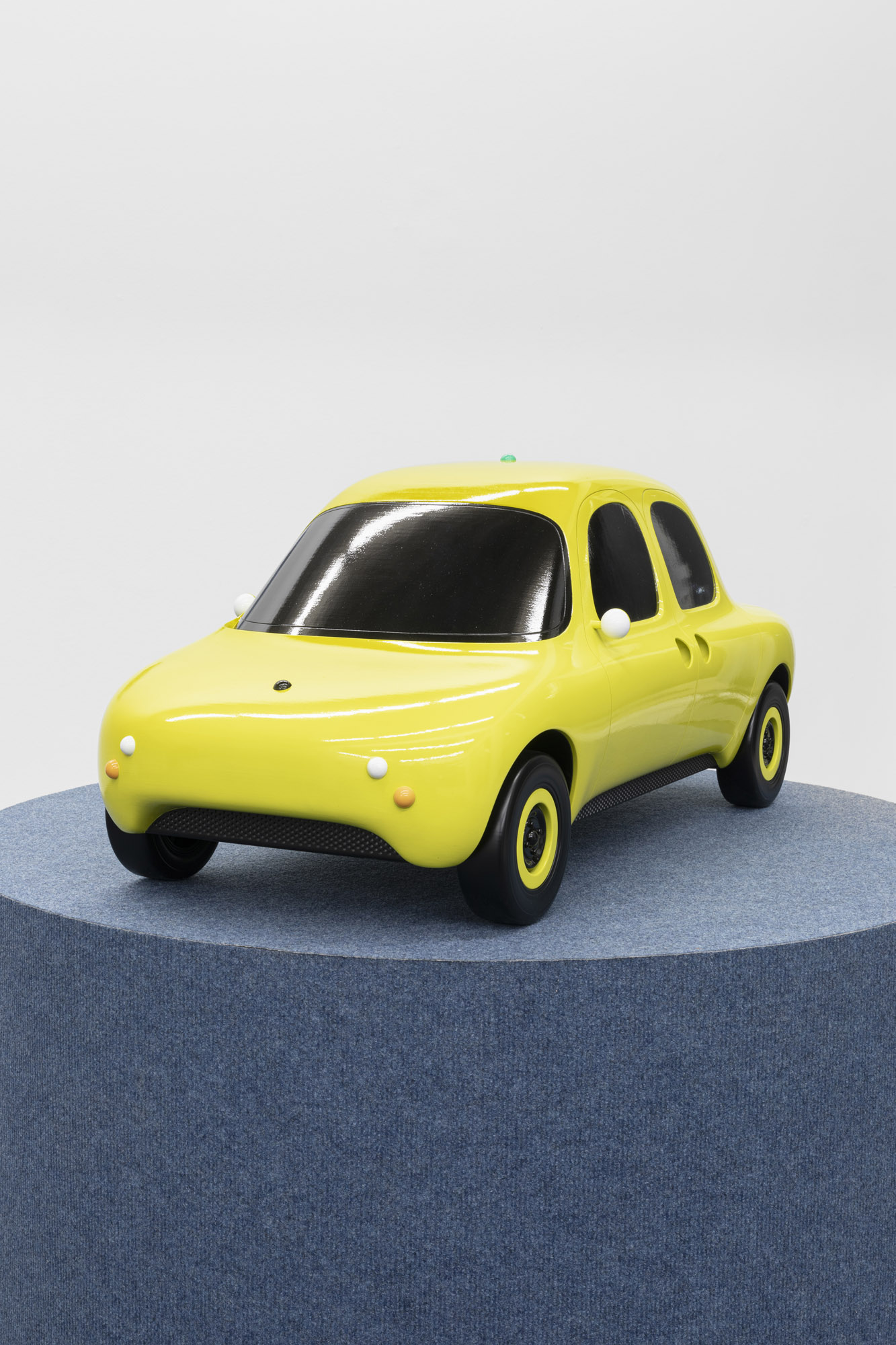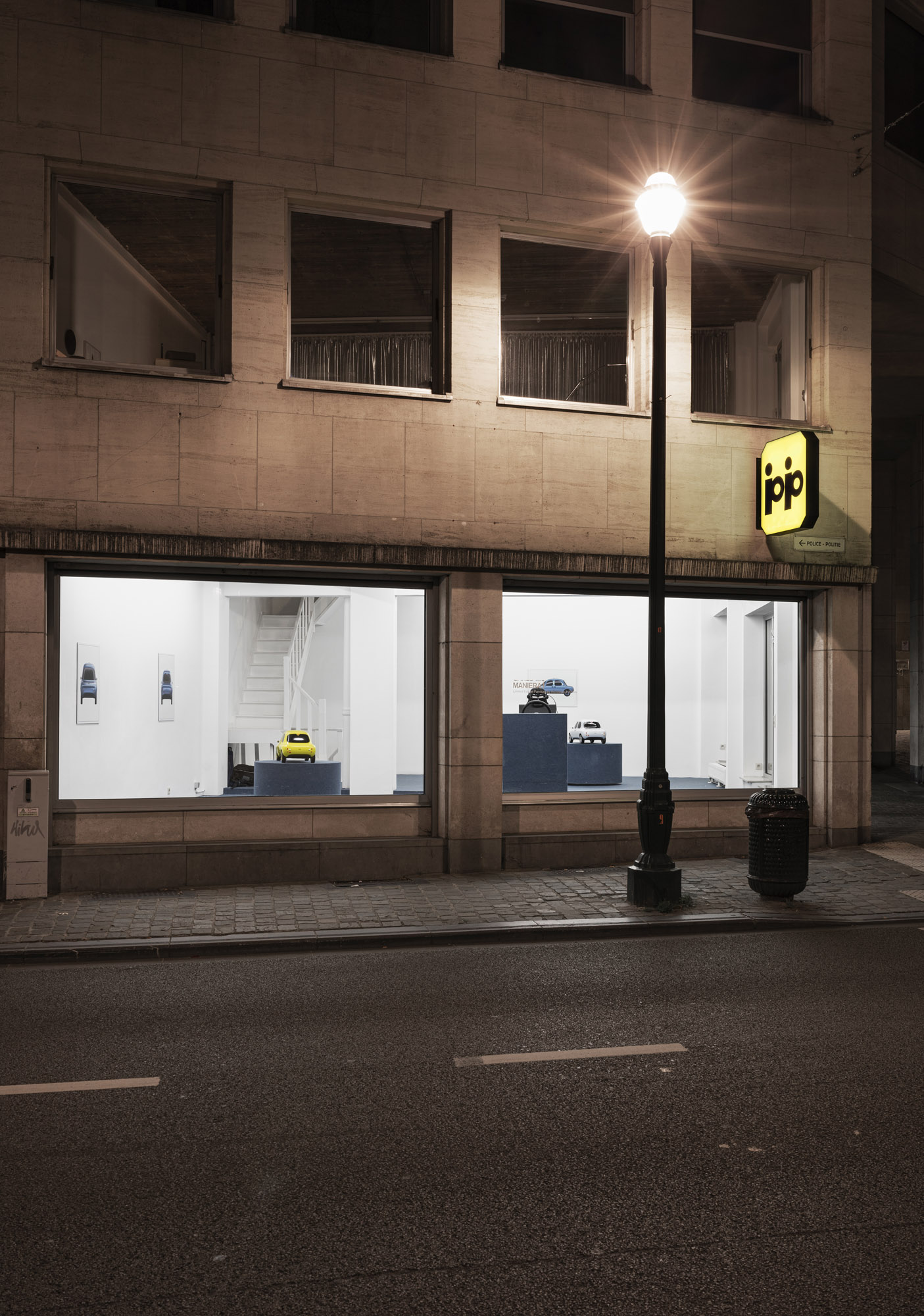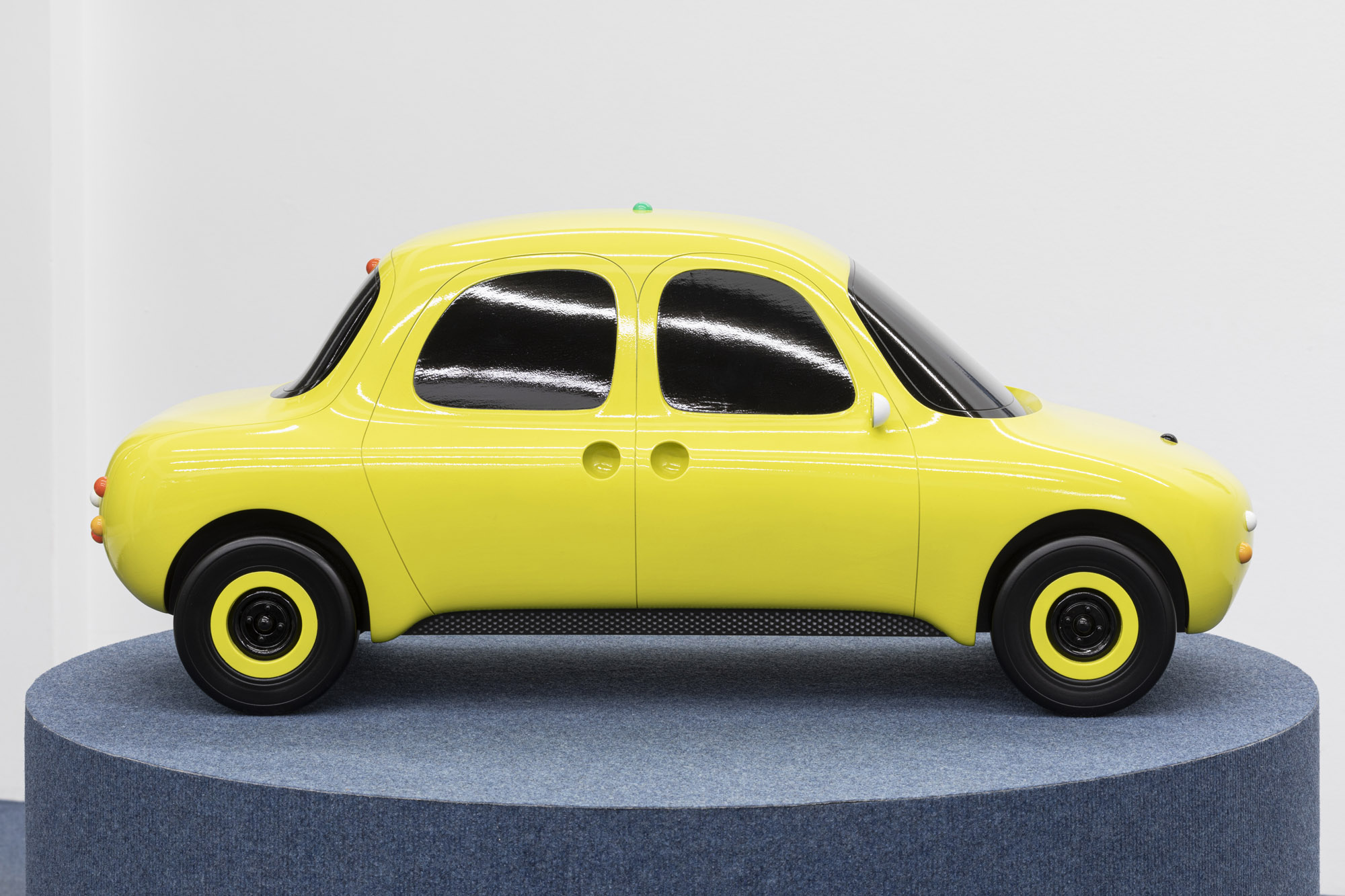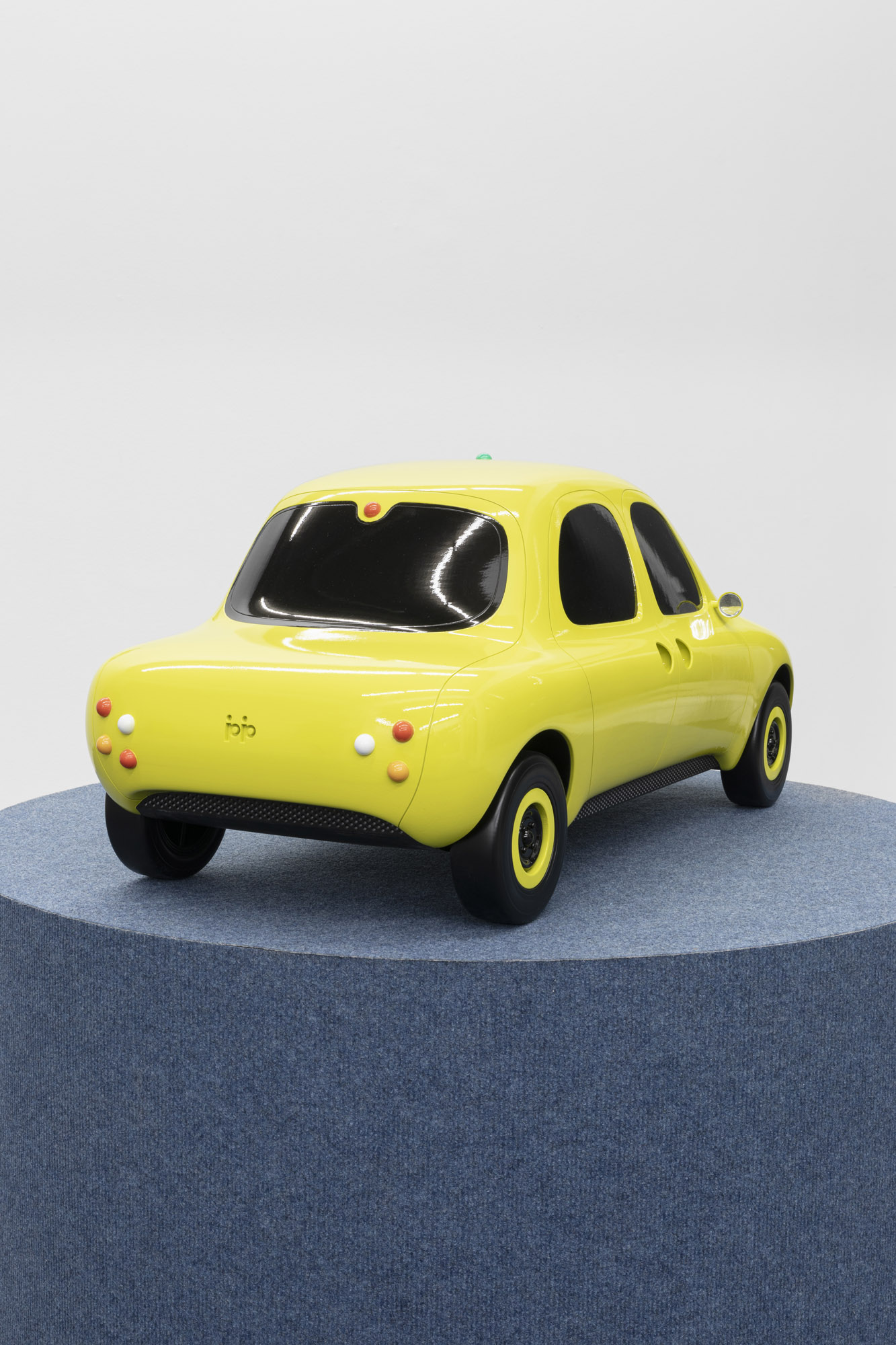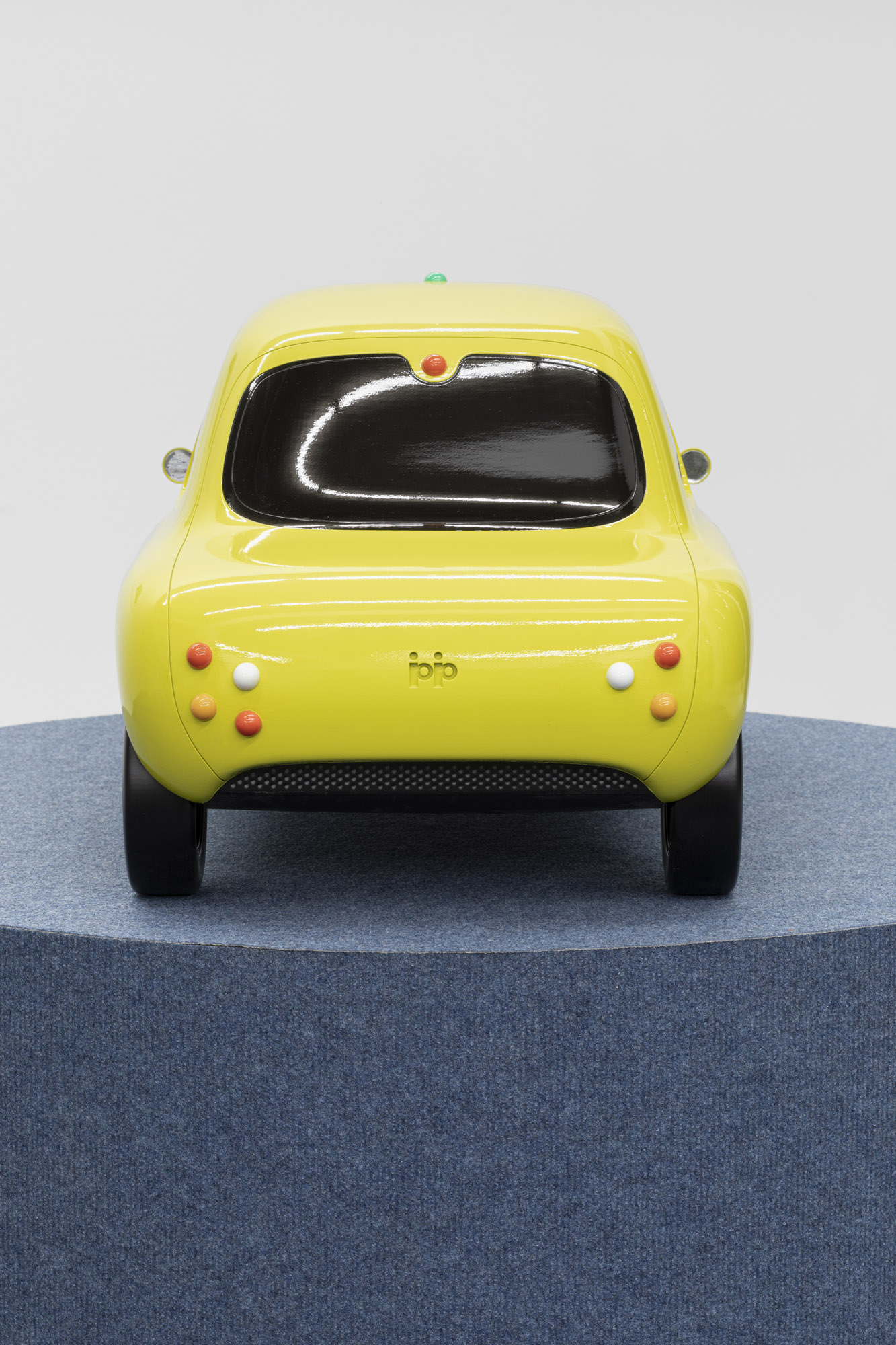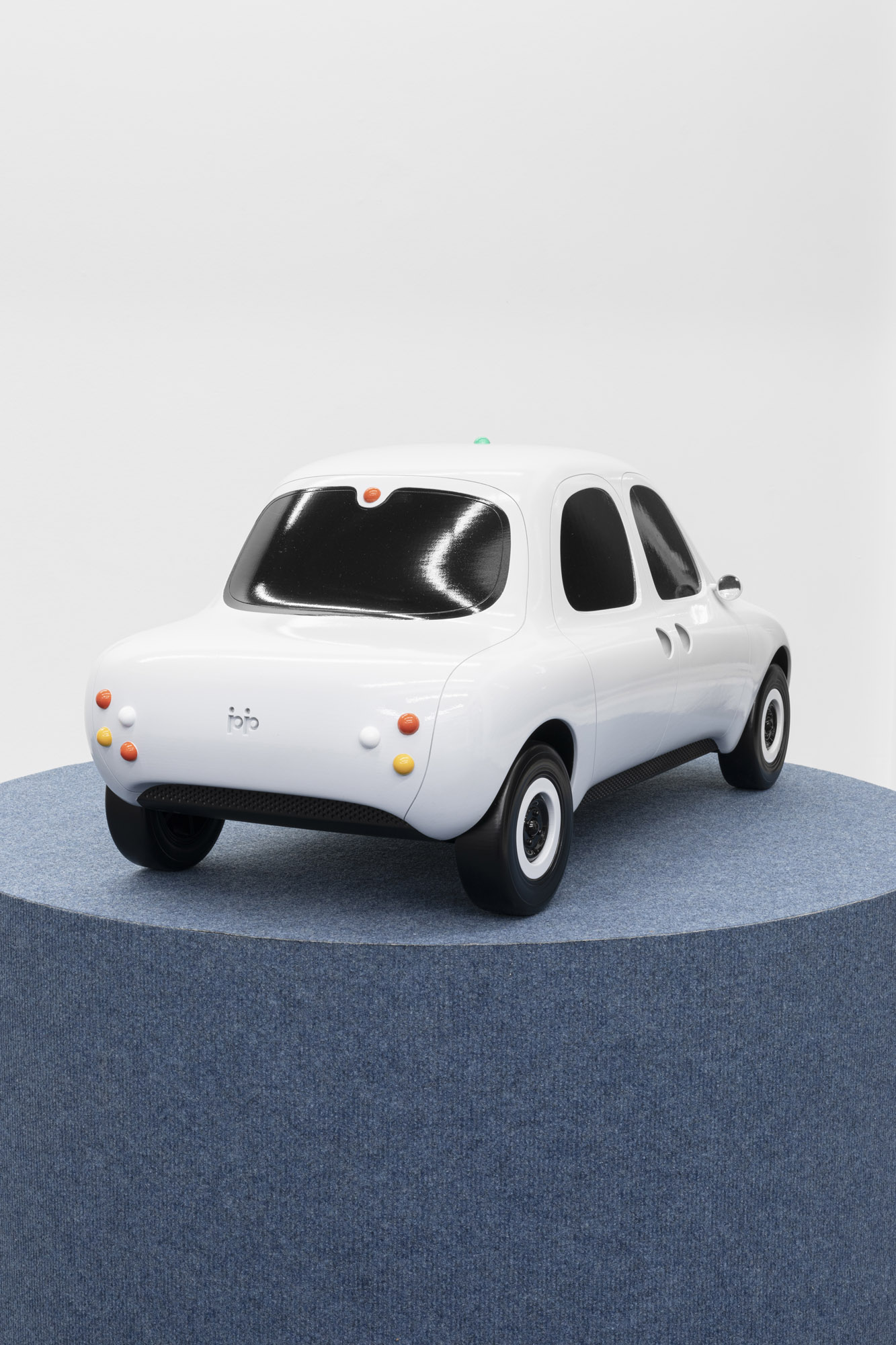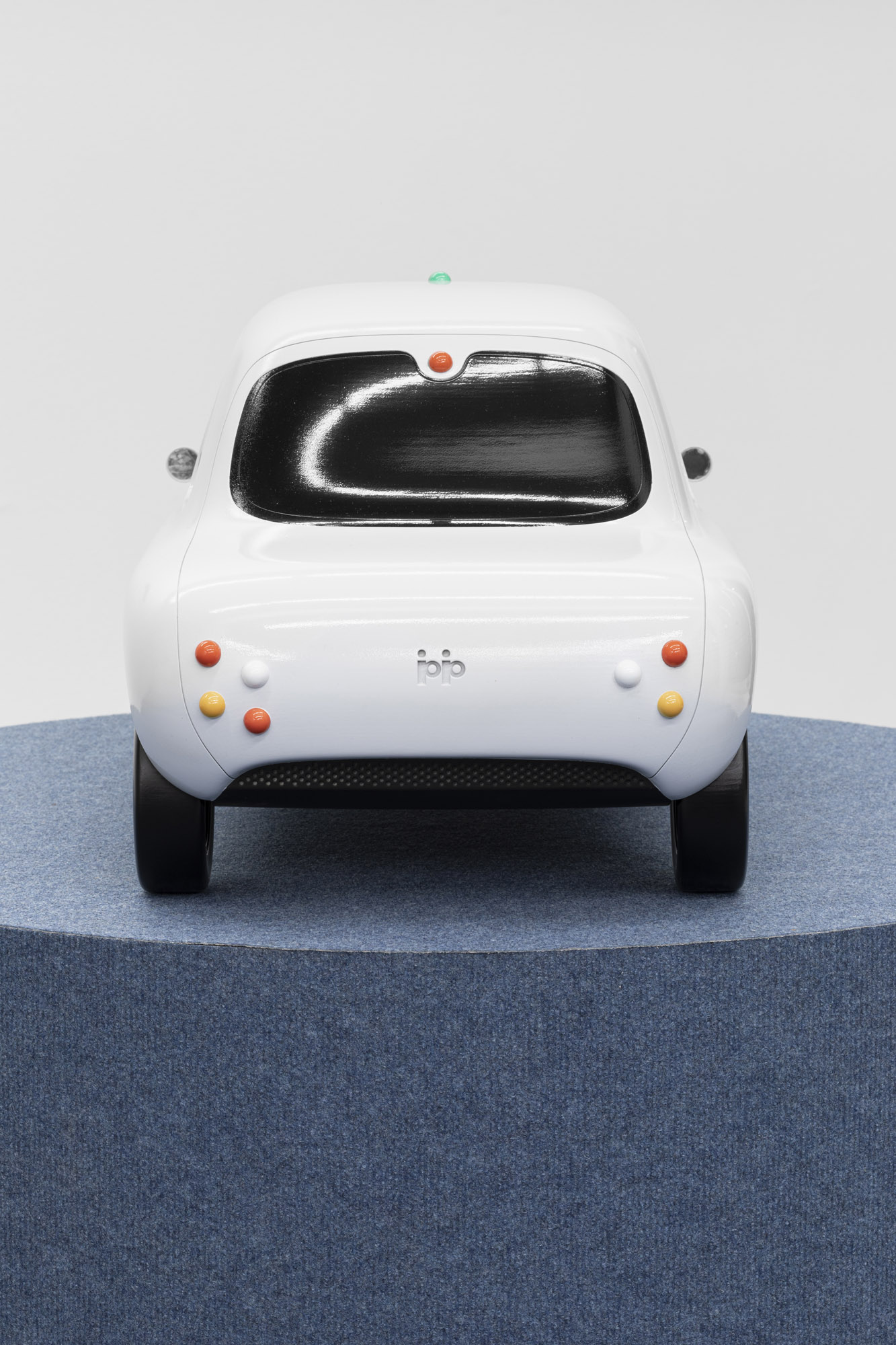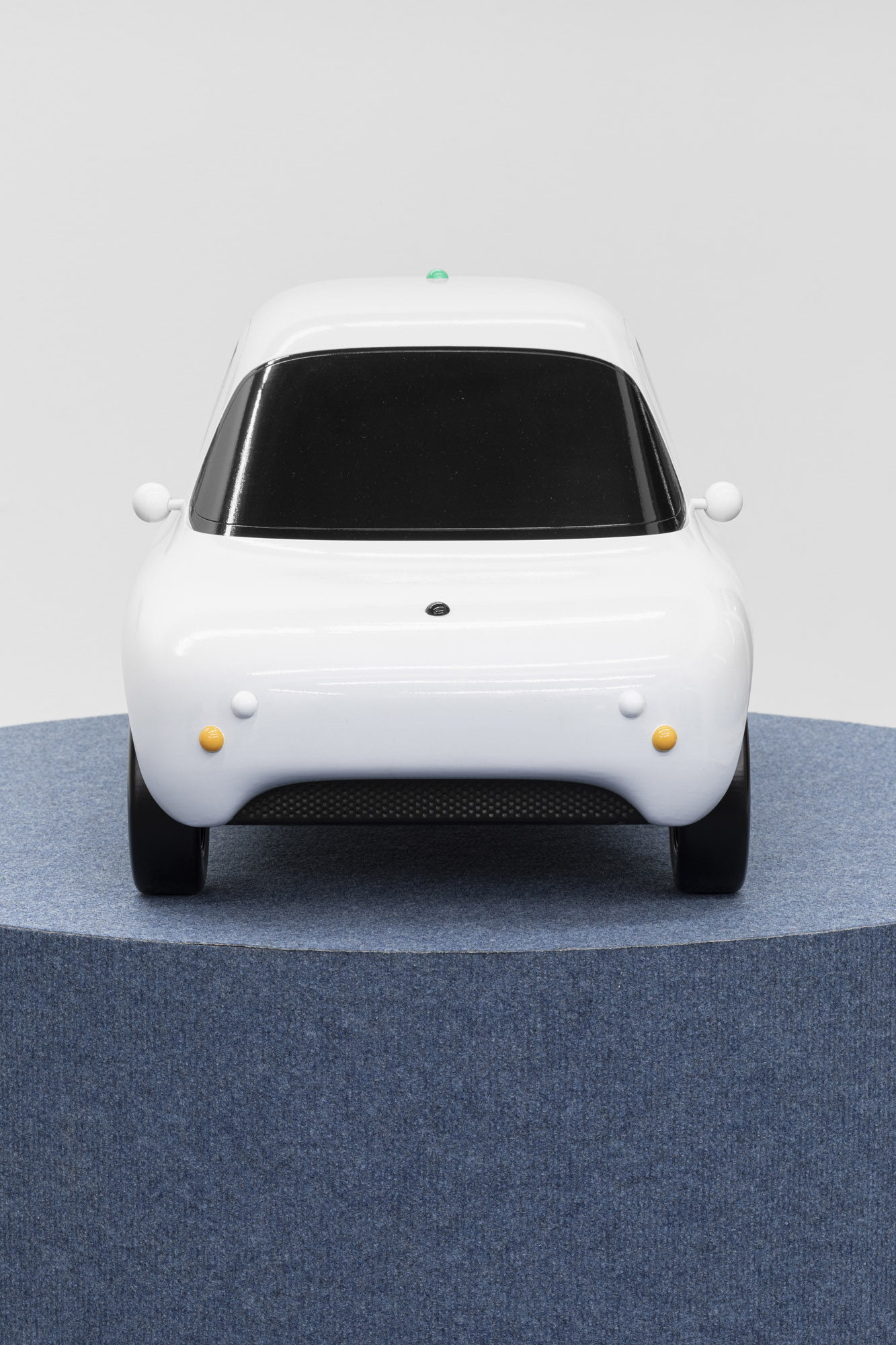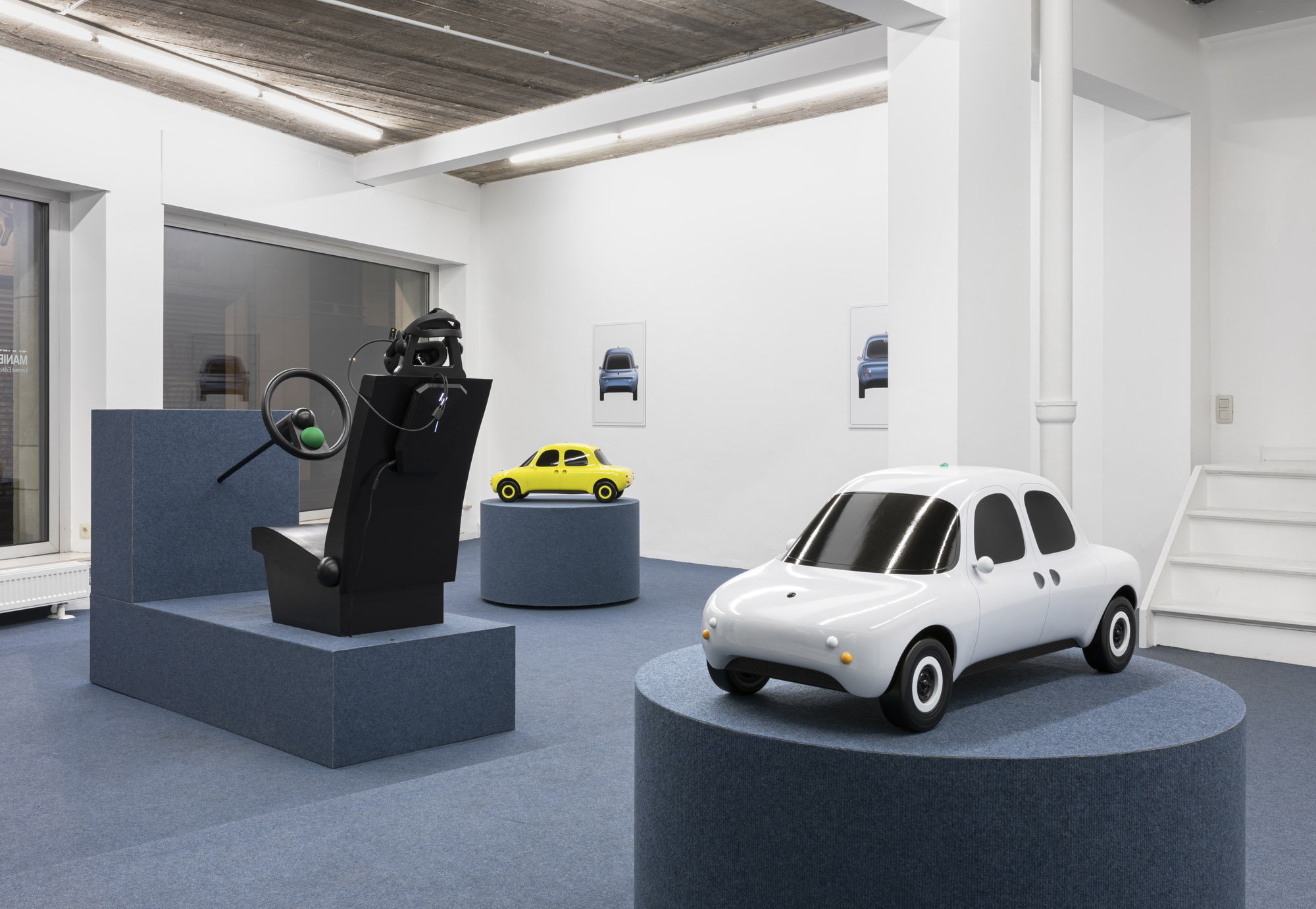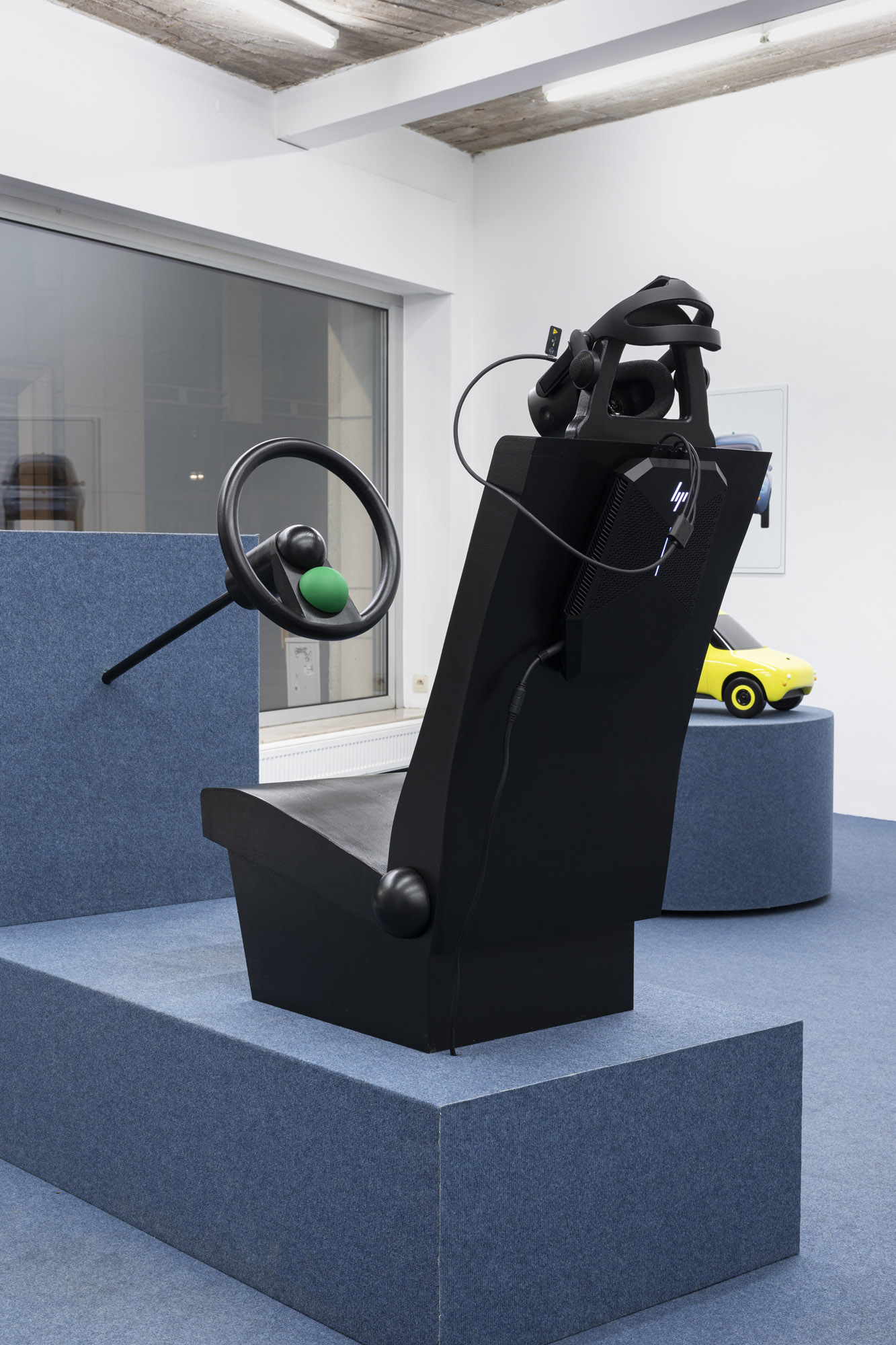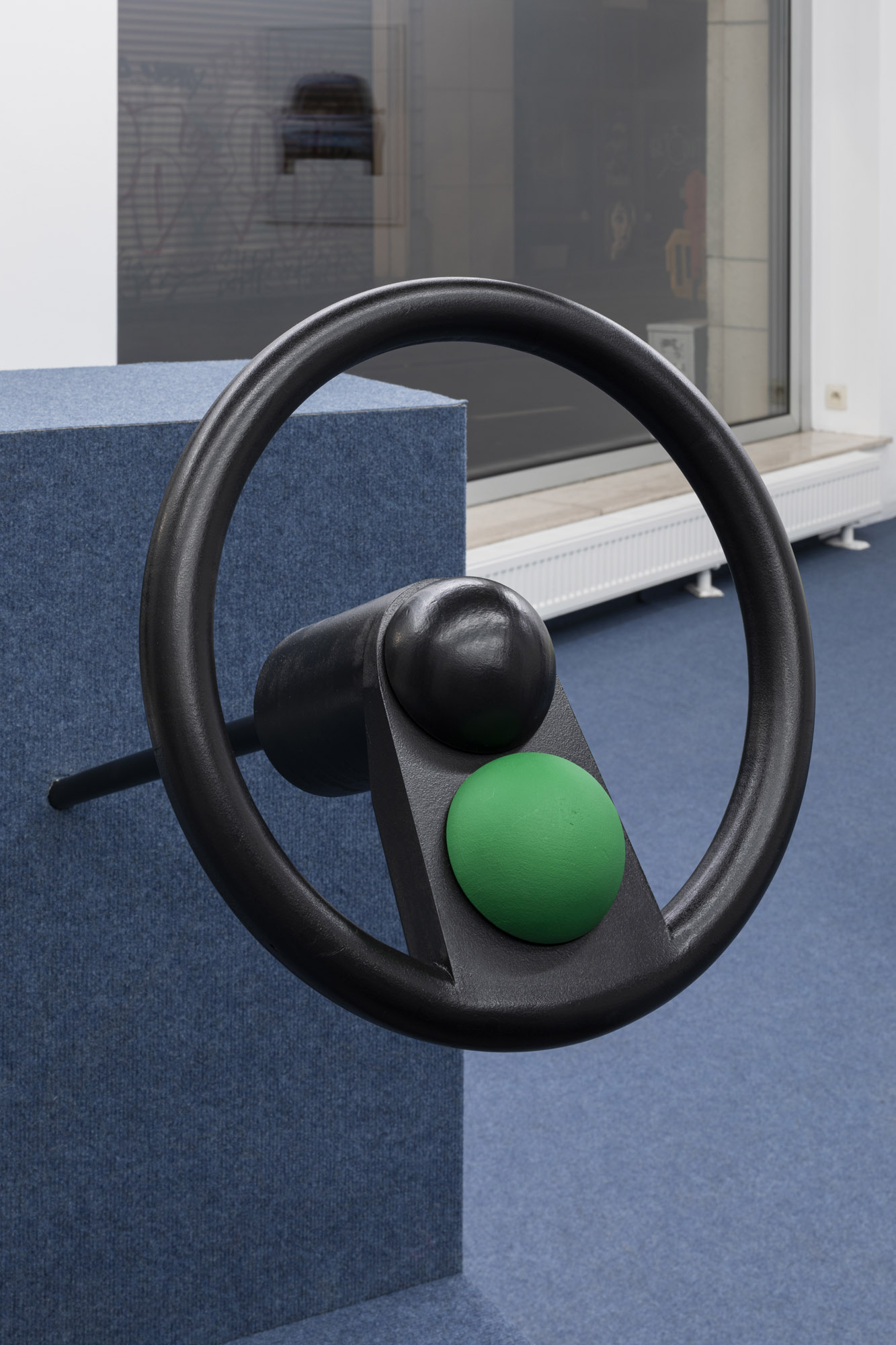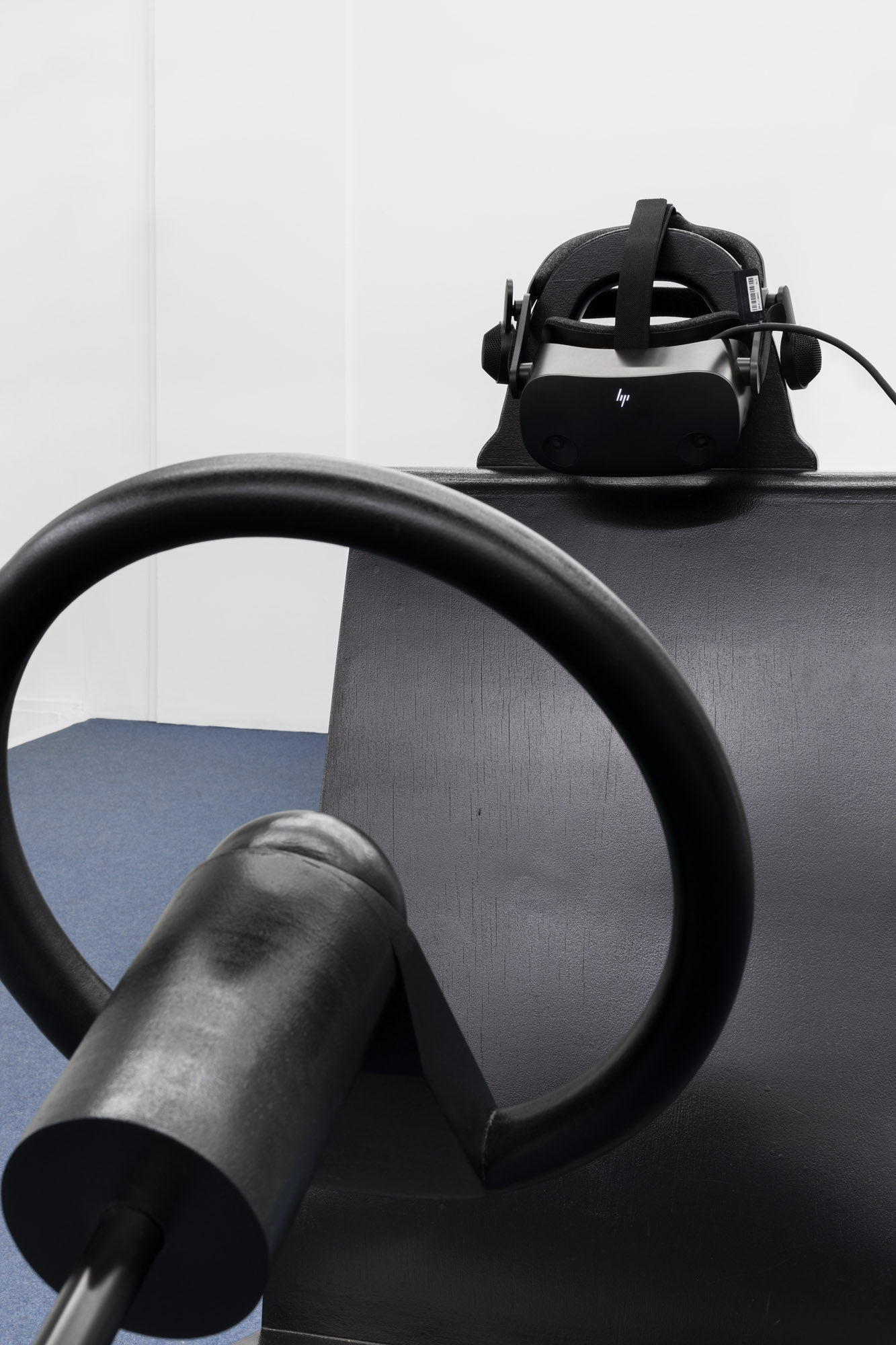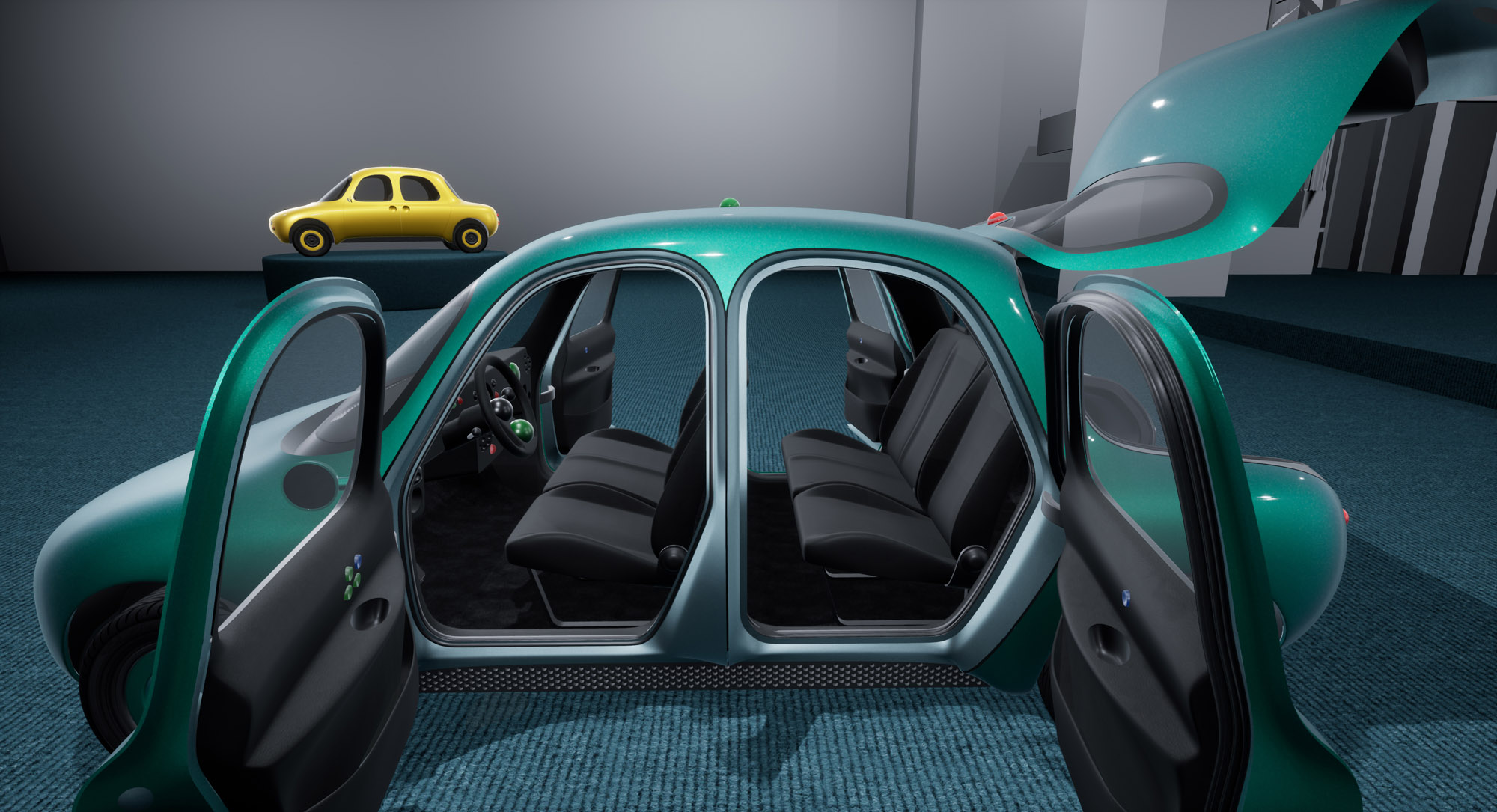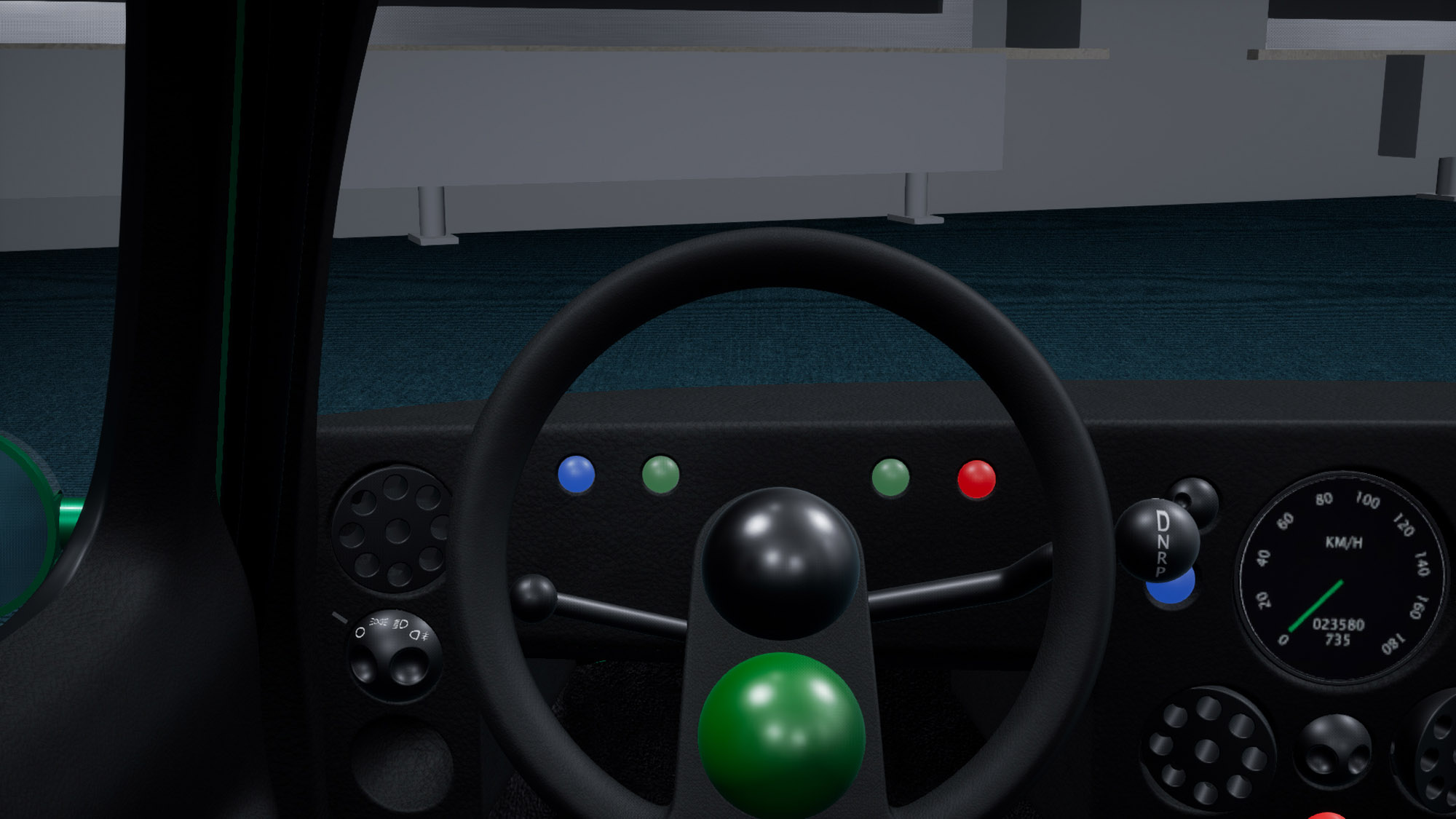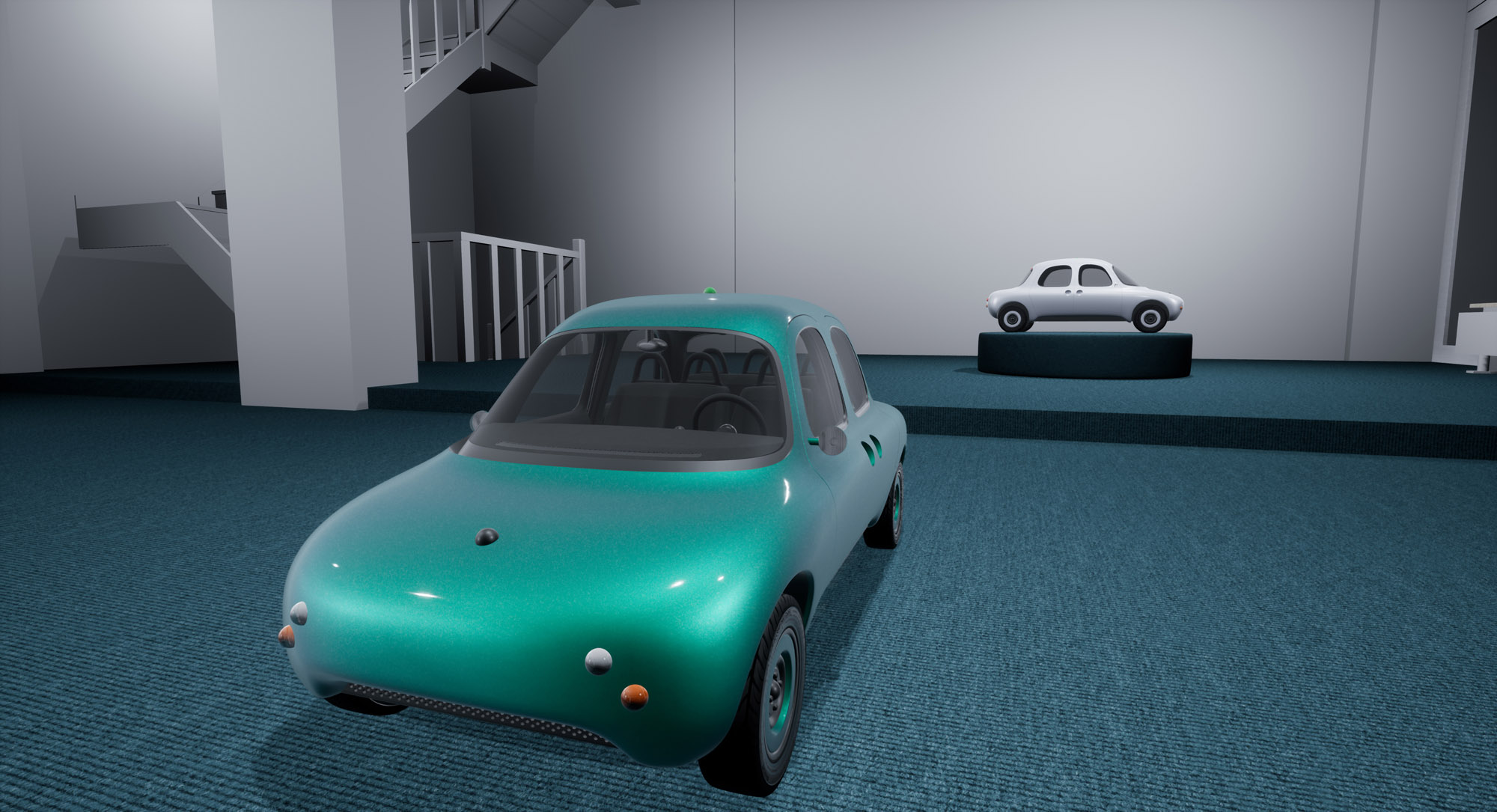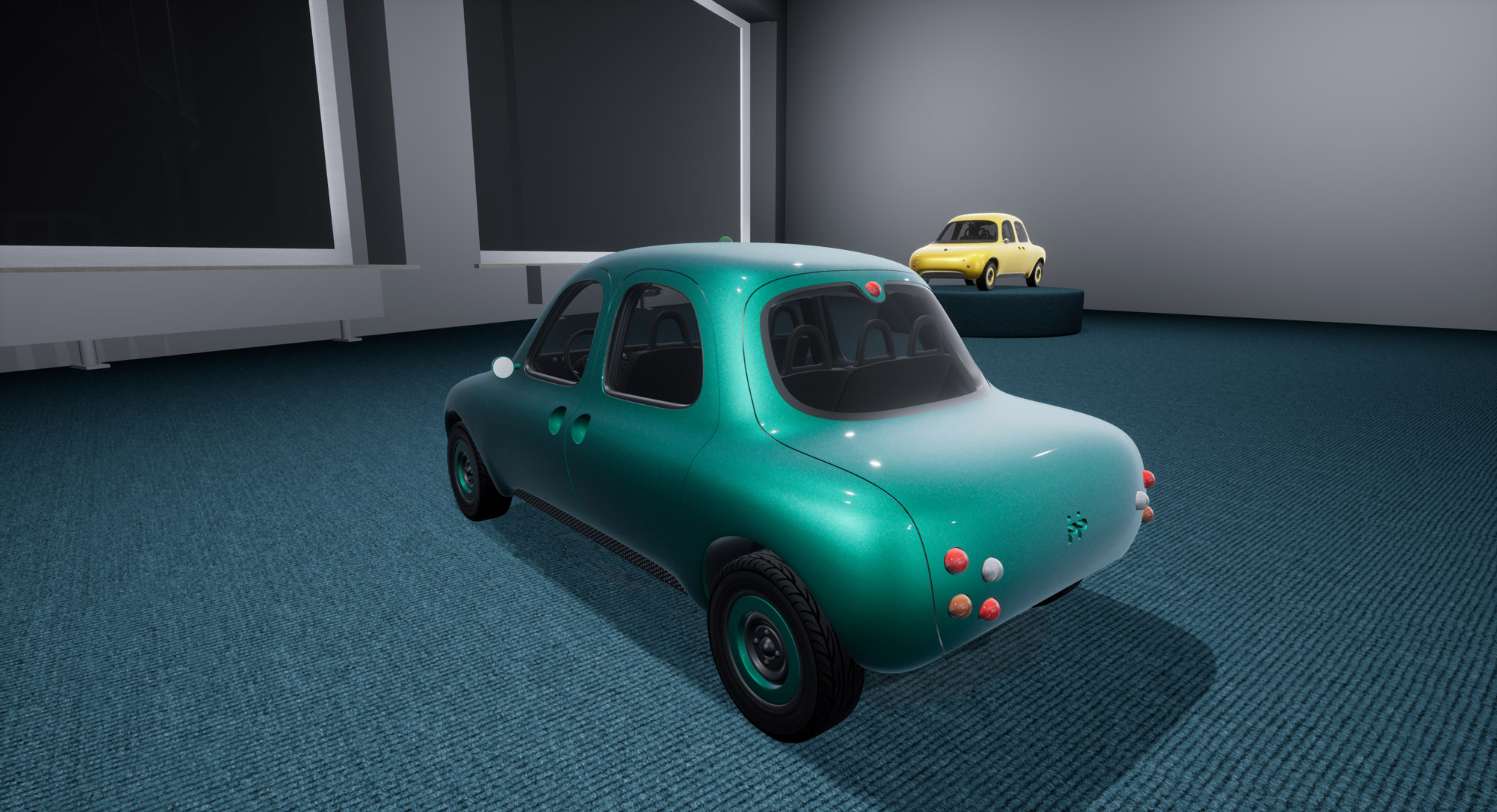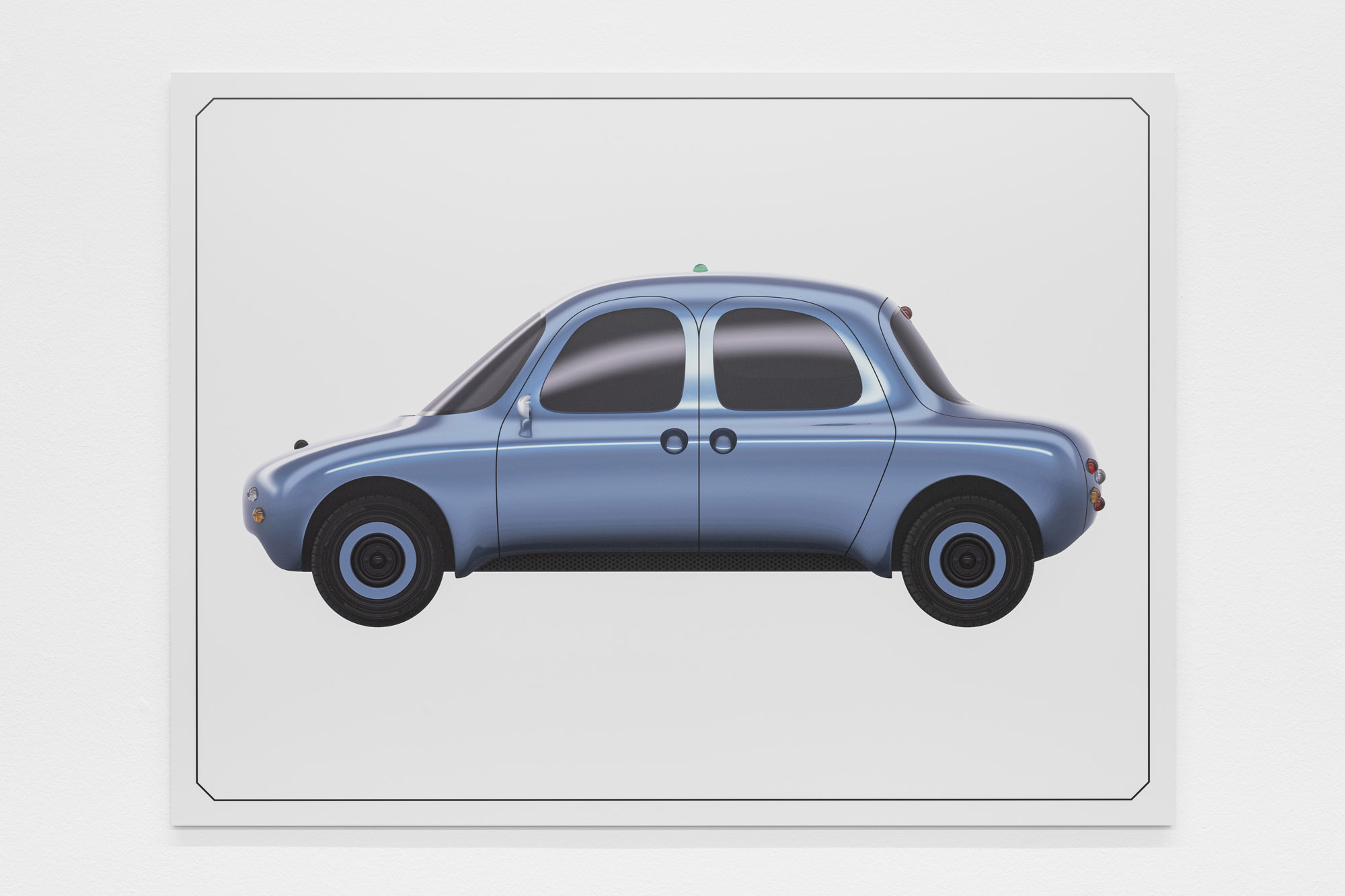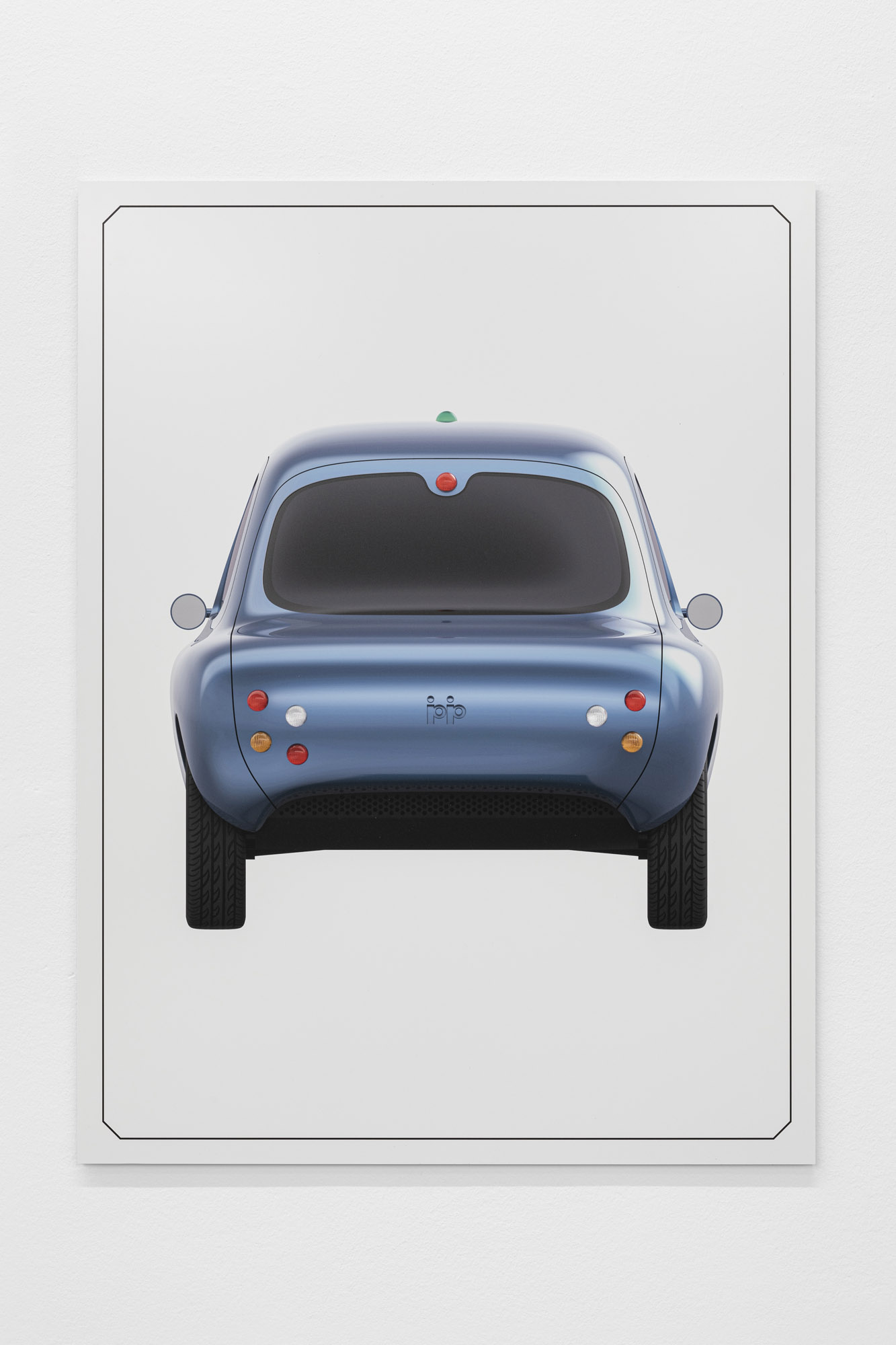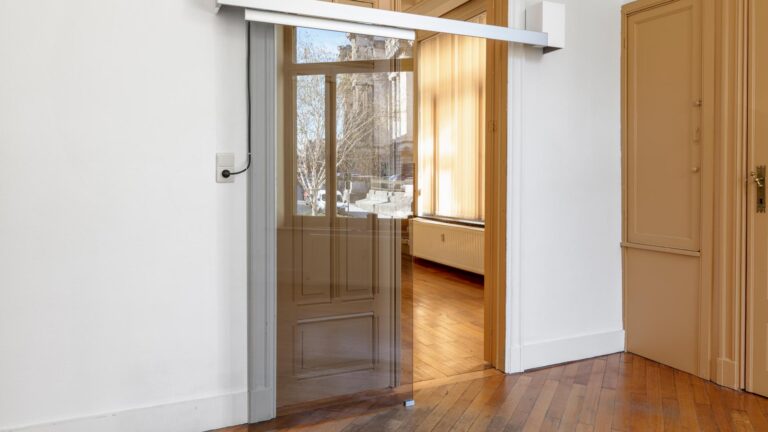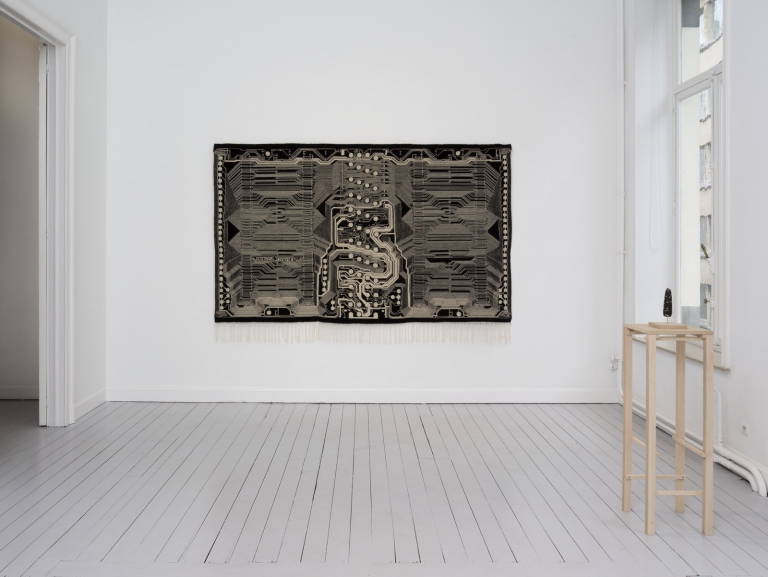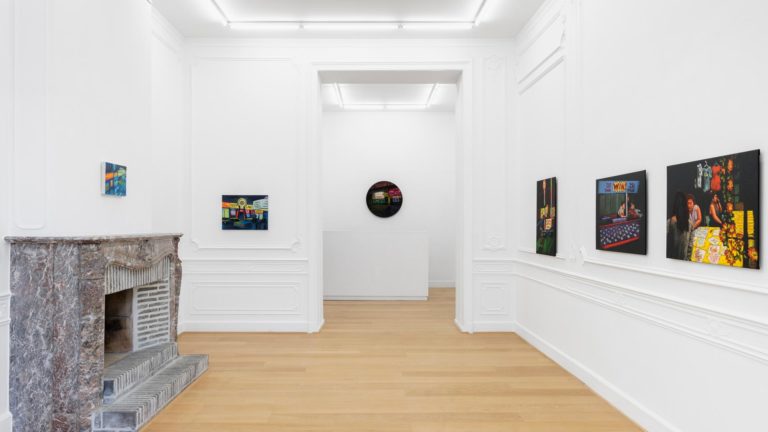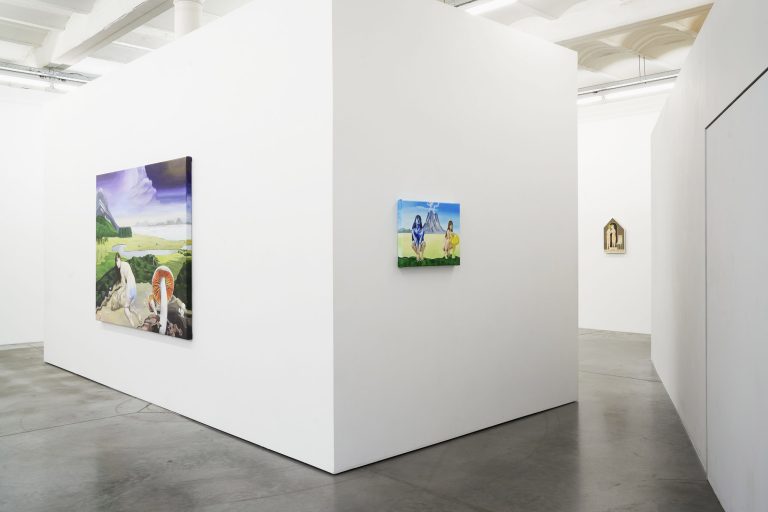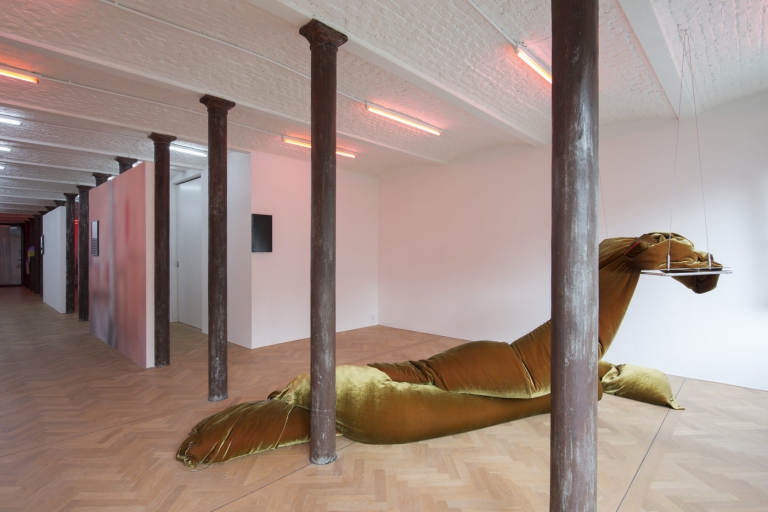Artist: Harald Thys
Exhibition title: PIIP
Venue: MANIERA, Brussels, Belgium
Date: September 9 – November 13, 2020
Photography: © Fabrice Schneider / all images copyright and courtesy of the artist and MANIERA, Brussels
MANIERA presents a remarkable exhibition by the Belgian artist, Harald Thys, who has taken a romantic and utopian idea as the basis to design a car: the PIIP.
Harald Thys, who is mainly known from his work with the artist duo, Jos de Gruyter & Harald Thys, has dreamed of designing a car from an early age. Today he is developing the PIIP, a simple electric car designed to provide a means of transport for the people, without too many frills, and far removed from the marketing-driven spirit of the (expensive) car business. The car has an almost naive and ‘sweet’ look, setting out from an emotional-artistic concept and producing a result as absurd as it is serious. The design, like the artist’s entire oeuvre, is characterised by a burlesque cheerfulness and an almost childlike simplicity, with humorous effects. Yet it also embodies an element of paradoxical emotions and critical reflections.
The PIIP is a perfect fit for MANIERA, a design company and gallery that invites architects and artists to develop functional objects – from small utensils to furniture, and now, from a bar to a car. The gallery offers a platform for transverse designs – colouring outside the lines of the designers’ regular work and outside the lines of design itself.
Harald Thys is developing the car with the help of Belgian car designer and mobility expert, Lowie Vermeersch. Vermeersch has been working in the automotive sector for years, first at the Pininfarina studios in Turin, and since 2011, at the head of his own established design agency Granstudio, which designs cars and mobility systems. Vermeersch quickly became fascinated by Thys’s PIIP. Because the artist is so far removed from the ‘automotive world’ in his daily practice, he approaches car design from an unbiased, non-marketing point of view. Lowie Vermeersch describes Harald Thys’s design as “a modestly sweet design, far from all the evil and malicious car designs of the last decade”.
The gallery will be transformed into a car showroom for the occasion, and in addition to sketches and a presentation leaflet, the PIIP will be presented through the use of 3D-printed models and an accompanying virtual-reality experience.
Lowie Vermeersch on Harald Thys’ design: “For me, the appeal of the PIIP is in its character. What he or she expresses is something that cannot exist today in the ‘automotive reality’ (where everything is subject to mass sales, and so also to the taste of the masses). PIIP is different. Introverted, just being itself, free of fashions, humane, unruly, but also proud in a way. Quiet and happy to drive and to exist. I see the real value of PIIP, therefore, in its ‘becoming real’, being what can’t yet actually be, without losing its character, but also – and this is very important to me – without being put away as ‘not serious’, ‘not functional’, ‘not working’, ‘not well done’. PIIP, in other words, must penetrate reality without being ‘barred’”.
PIIP design: Harald Thys with the support of Granstudio Torino
PIIP logo design: Boy Verreecken
Supported by: Flanders Department of Culture, Youth and Media
___
Metropolitan brouhaha in the year 2022: oncoming vehicles on all sides, gridlocked one-way traffic, frustrated hooting, blocked freeways, clogged arteries, furious diatribes, motorised cyclists, electric scooters, out-of-the-box thinkers, the French, wailing sirens, endless roadworks, no parking! half a roundabout with traffic lights, out of order! crossing ducklings! FLASH! a banana skin, a hole in the road!
The PIIP and you manoeuvre effortlessly through it all. Its modest length (418 cm) and small turning circle (9m) guarantee smooth handling. The high seats and large, low-cut windows create an exceptionally expansive field of vision. With a roof height of 173.5 cm, atop which a pert green light illuminates whilst the vehicle is in motion, the PIIP is unmissable for other road users too. Its electric engine is near soundless, but for warning a careless road user or greeting a friend the steering wheel is fitted with two horns – each with its own sound: the first (black) is a classic horn, whereas the second klaxon (green) has a more tender and elated timbre. The right-hand (!) passenger has their own green klaxon on the dashboard – after all four eyes see more than two! Parking sensors are not necessary, because the PIIP’s engineers have come up with a playful alternative: the bodywork for the front, side and rear has been developed in a resilient yet supple material that can be lightly pressed without being damaged. When this happens, a gentle ‘piip’ sounds out!
A PIIP journey never takes too long. In PIIP’s cosy, spacious cockpit you’ll scarcely be aware of potentially irksome external influences. For a contemporary car, the interior is incredibly simple, creating a pleasant living room feel that’s unheard of in contemporary cars. This is enhanced by the seating space: the front and back are fitted with both a single seat and a double seat, meaning no fewer than six comfortable seats. And of course a double seat needs a paddle shifter. This might take a bit of getting used to, but it provides for a coninuous foot space up front.
On the road! Trips on major highways, along peaceful provincial routes and through rural and natural areas… The Chuanzang motorway over the dry, white-peaked Tibetan highlands… A sumptuous route des grands crus through the undulating Burgundian vineyards on an early autumn morning…. Curious monkeys appearing out of the misty green on the N2 in eastern Ghana… A key feature of PIIP comes into its own here. From its soft, dark interior, through the large glass screens, you and your passengers are afforded a cinematic perspective of the passing panoramas. You observe the landscape almost like an anonymous onlooker, were it not for the fact that the PIIP is a striking apparition. Its silhouette, the friendly-looking shapes, its distinct colour, the small circular lights, and of course the top lamp – the green cherry – give the unmistakable impression of a unique creature that’s eccentric in its apparent simplicity.
Time for a break? When parked the PIIP unveils further surprises. The backrests of all the seats can be folded completely flat, transforming the interior into a generous open space – enough room for three adults to lie down in. Thanks to the open design with no barrier behind the back seat, it’s possible to lie with your legs in the boot and enjoy the starry sky through the giant rear window. Time for the PIIP to grab forty winks too! With the boot lifted, this becomes an openair spectacle. The doors of the PIIP hinge forwards at the front, and backwards at the back (like a carriage) which creates maximum openness for enjoying the surroundings from the interior. As you drink in the view, the PIIP charges itself via an electric plug in its black nose.
With its foldable seats, the PIIP creates a generous open (cargo) space. But it doesn’t stop there: all the seats are fully detachable. This means that it boasts an unusually large volume. Say you want to transport something – bikes, 35 banana boxes, furniture, two adult goats… No problem!
Harnessing passionate and uncompromising mechanical and electronic ingenuity, the PIIP engineers have devised a consciously simple automotive experience, one that makes room for the sensorial drive across a continent. In contrast to contemporary haste, with a PIIP you prefer to be somewhere between A and B.
A people carrier? Hatchback? C or D segment? This type of categorisation is insufficient for pinpointing PIIP’s idiosyncratic design. That’s right: it’s a category onto itself. Designed for the delights of travelling with company – of which the playful PIIP is a part. As you drive it through regions and countries, your connection grows; over time you’ll be having conversations with one another. You’re in good hands, because as well as being a robust, reliable machine, the PIIP is a great friend.
-Gijs Milius

